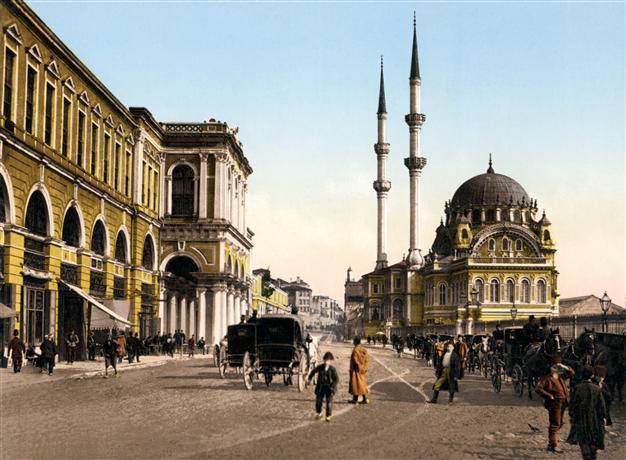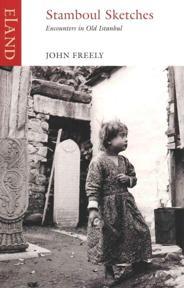Clichéd encounters in old Istanbul
William Armstrong - william.armstrong@hdn.com.tr
 ‘Stamboul Sketches: Encounters in Old Istanbul’ by John Freely (Eland, 208 pages, £12.99)
‘Stamboul Sketches: Encounters in Old Istanbul’ by John Freely (Eland, 208 pages, £12.99) John Freely is seen as the doyenne of travel writing on Turkey, with over 40 titles to his name. As Maureen Freely - the great translator of Orhan Pamuk - writes in the afterword to this volume, the most recent available guidebook when her father first started perambulating around Istanbul was published on the year he was born. Today, his “Strolling Through Istanbul” from 1974 is regarded as a classic, with a place in the suitcase of many naïve tourists arriving in the city.
John Freely is seen as the doyenne of travel writing on Turkey, with over 40 titles to his name. As Maureen Freely - the great translator of Orhan Pamuk - writes in the afterword to this volume, the most recent available guidebook when her father first started perambulating around Istanbul was published on the year he was born. Today, his “Strolling Through Istanbul” from 1974 is regarded as a classic, with a place in the suitcase of many naïve tourists arriving in the city.Recently reissued, the slim selection in “Stamboul Sketches” was mostly written before Freely put together his oeuvre. But it captures most of what he was about: The tone is sentimental; the prose is purple; the overwhelming impression is dated rather than romantic. Towards the beginning, Freely writes that for the title he has “used the old-fashioned name of the city, as seeming more appropriate for the atmosphere I have tried to create.” That should set alarm bells ringing. Over the course of 200 pages we get the flâneurial peregrinations of a second-rate Victorian Orientalist, dropping in at Istanbul during a 1960s version of the Grand Tour.
But Freely has a deeper historical knowledge than most. He has a particular fondness for the 17th century Ottoman traveler Evliya Çelebi, whose famous account of the procession of the Istanbul guilds for Sultan Murat IV is a constant reference point. But while Evliya’s “Seyahatname” is full of boisterous authenticity and (often unintentional) humor, Freely’s work is terribly clichéd. Take this hummer of a passage, to be read in the quaint accent of a 1950s BBC documentary:
The Spice Bazaar is a veritable museum of eastern smells; drugs, gums, herbs, spices, perfumes and incense, as if all the aromatic lands of Asia had concentrated their most exotic odours here under one roof so as to introduce the traveler to the heady atmosphere of the Orient.
The writing is full of enough orientalist bromides to make you - or in Freely’s style, “one” - blush.
Despite constant references to Evliya, Freely actually reminds me of Italian traveler Edmondo de Amicis, who wrote boringly about his visit to Istanbul in the 1870s. Like de Amicis, Freely focuses exclusively on the surface of things; also like de Amicis, he is always keen to tell a story, even when the reader is less keen to hear one:
In a courtyard café, an itinerant barber shaves a lawyer who is negotiating a contract with a rug-merchant leaning from a balcony on the floor above. Under the vine-draped arcade merchants are gathered around glowing mangals, and from their hand-gestures one can tell that they are talking of trade here in the old-fashioned oriental manner, just as they probably did here in Evliya’s way.The book is accompanied throughout by evocative black and white photos from Freely's friend Sedat Pakay. But there is little in “Stamboul Sketches” of any anthropological depth. Take the chapter on the historic Roma neighborhood of Sulukule, recently emptied of its traditional inhabitants in a botched urban transformation project (which has since been ruled illegal): “The only signs that the Gypsies were ever there are the poignant, house-shaped patches of bright blue and pink and orange paint along the ancient city walls, marking where the Gypsy shacks once stood.” A more thoughtful author would here reflect on the profound socio-economic forces at work reshaping the city - not necessarily handwringing about “neo-liberalism,” but at least taking a deeper dive. Not Freely, who lets his half-formed thought linger and fade.
Still, he has no illusions of doing anything else. Evidently there are plenty of wide-eyed people who swoon at his whimsical meditations on the Istanbul of the tourist imagination. But someone should have sent him to Bağcılar.










